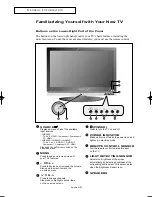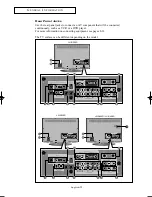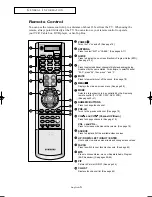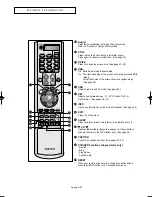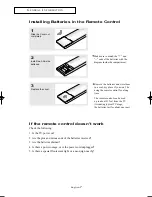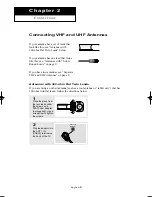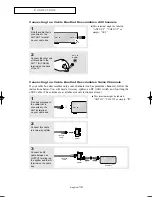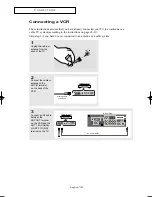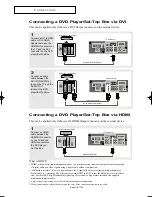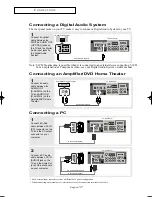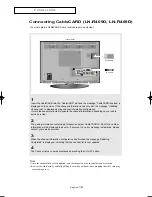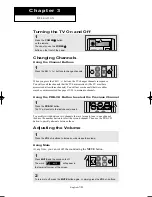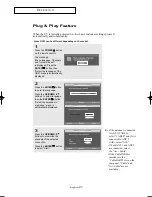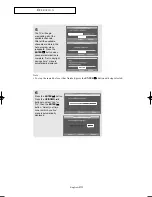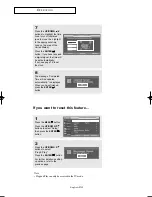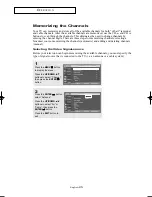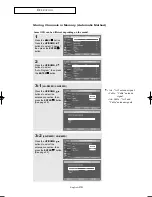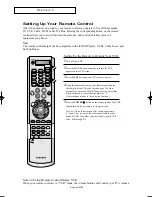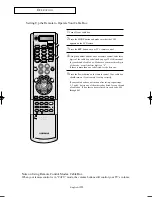
English-
16
Connecting a DVD Player/Set-Top Box via DVI
This can be applied only if there is a DVI Output connector on the external device.
* Each external input source device has a different back panel configuration.
1
Connect a DVI to HDMI
cable or DVI-HDMI
Adapter between the
HDMI/DVI connector on
the TV and the DVI
connector on the DVD
player/Set-Top Box.
2
Connect an audio
cable between the
DVI IN [R-AUDIO-L]
jack on the TV and the
AUDIO OUT
jacks on the DVD
player/Set-Top Box.
DVI to HDMI Cable (Option)
Audio Cable (Option)
DVD Player / Set-Top Box
TV Rear Panel
DVI to HDMI Cable (Option)
DVD Player / Set-Top Box
TV Rear Panel
Connecting a DVD Player/Set-Top Box via HDMI
This can be applied only if there is the HDMI Output connector on the external device.
1
Connect an HDMI
cable between the
HDMI/DVI connector
on the TV and the
HDMI connector on
the DVD player/
Set-Top Box.
What is HDMI?
•
HDMI, or high-definition multimedia interface, is a next-generation interface that enables the transmission
of digital audio and video signals using a single cable without compression.
•
“Multimedia interface” is a more accurate name for it especially because it allows multiple channels of
digital audio (5.1 channels). The difference between HDMI and DVI is that the HDMI device is smaller in
size, has the HDCP (High Bandwidth Digital Copy Protection) coding feature installed, and supports
multi-channel digital audio.
HDMI Cable (Option)
DVD Player Rear Panel
TV Rear Panel
C
O N N E C T I O N S
* When connecting an external device, match the color of the connection terminal to the cable.
01 BN68-00910A-03Eng.qxd 10/20/05 3:28 PM Page 16

